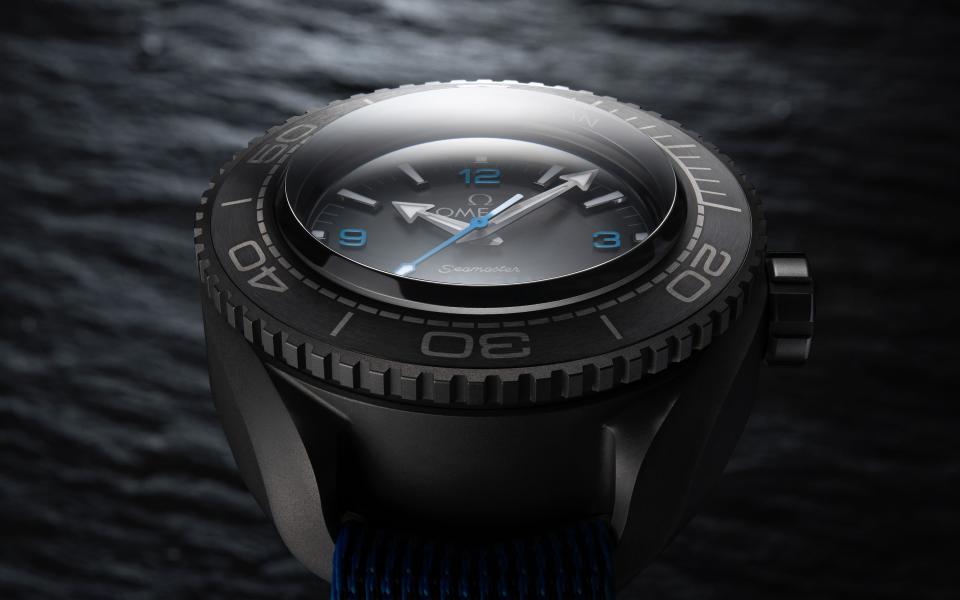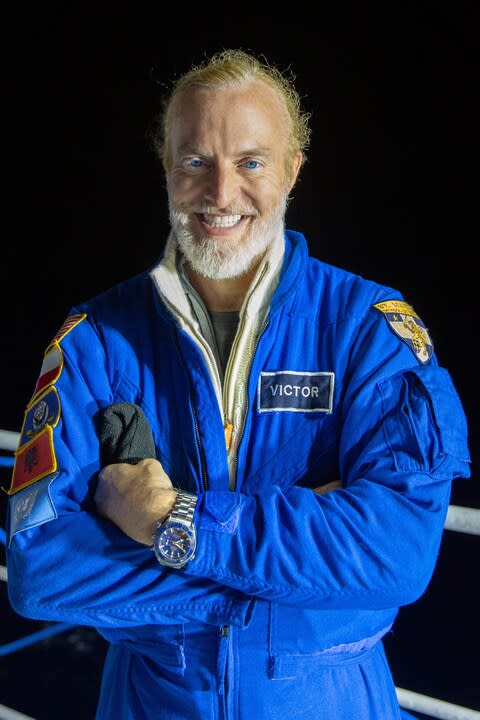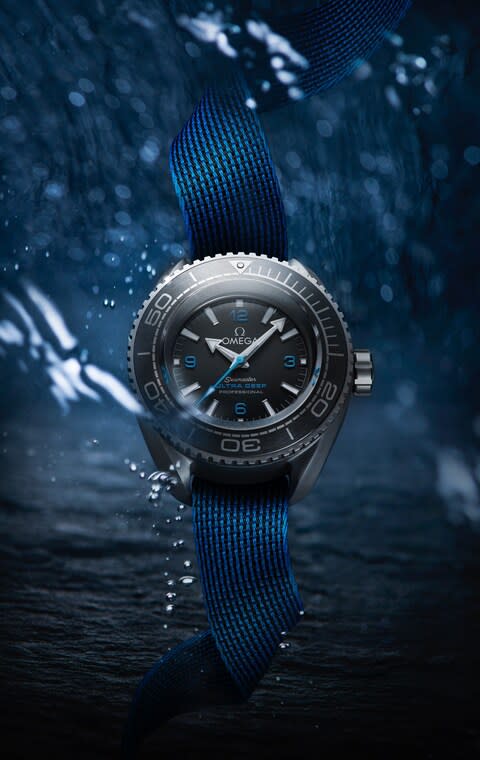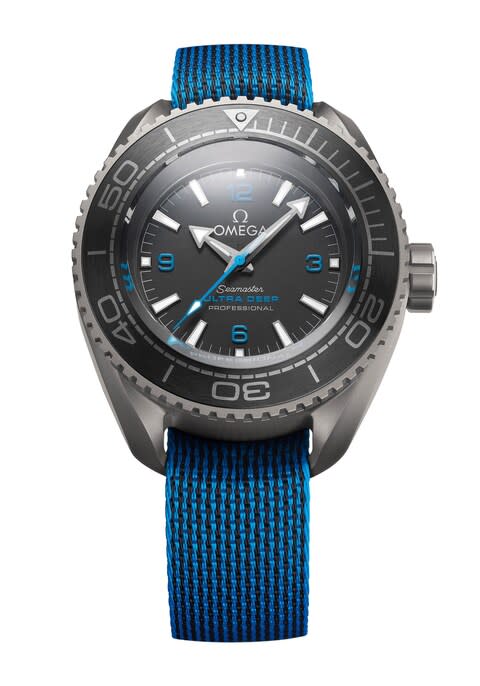Deep sea diver Victor Vescovo takes Omega to the bottom of the world

What is an explorer to do once he has climbed the highest mountain on each of the world's continents? For Dallas businessman and adventurer Victor Vescovo, the answer was simple… he would become the first person to dive to the deepest point of each of the world's oceans.
The Five Deeps Expedition was on.
“It started in 2015 as a sort of mirror image of the mountains I had climbed,” he says. “No one had ever been to the bottom of four of the world's five oceans but I knew it was possible because two other expeditions had already gone to the bottom of the fifth.
“It began as a technical adventure, but as we went along, the scientific aspect of it really caught my imagination. We now have scientists on all of our dives – geologists, marine biologists, engineers – and with our extensive sonar system, we are now mapping the seafloor.”
On 28 April 2019, Vescovo began the second stage of his adventure in the middle of the Pacific Ocean, where he took his $48m submersible Limiting Factor to a new record depth. When he eventually touched ground at the southern tip of the Mariana Trench, known as Challenger Deep, Vescovo was at the deepest known point on earth – 10,928 metres below sea-level.

This trumped the previous record set by film director James Cameron and his submersible Deepsea Challenger, which reached 10,898 metres in 2012 (in turn beating Don Walsh and Jacques Piccard’s 1960 record of 10,912 meters, achieved in the bathyscaphe Trieste).
More than four years in preparation – from the design of the submersible to the fitting-out of a support ship – the entire project was privately funded by Vescovo with the aim of retaining complete control. As he got closer to the start of the expedition, he decided that he wanted a timepiece to accompany him on his incredible journey.
“I knew that Omega had been involved in other great adventures and had a history of making some of the very first watches that divers used,” he says, referencing the double-cased Marine from the 1930s. “I think this imprinted itself on my brain, along with the brand’s association with the Olympics – it's all about precision. And what does Omega actually mean? It’s Greek for final, the end. We were going to the end of the earth in some respects.”
Vescovo went to his local Omega boutique in Texas, identified what he thought would be the perfect watch – a Planet Ocean Seamaster – and bought it. Only after he had started the expedition did he get in contact with Omega and was delighted that they wanted to be involved. The company flew him out to its HQ in Bienne, Switzerland and Vescovo discovered a strong commonality in terms of how he and Omega approached challenges. Seeing an opportunity to good to pass up, the brand decided to go all out, taking just six months (plus all its decades of experience) to develop the ultimate dive watch.

Shared knowledge was crucial to the project. The biggest challenge for Vescovo during his four years of preparation, was in designing a submersible vessel capable of withstanding the extreme pressure experienced during the dive (up to 16,000 PSI) without risking a fatal leak. This was the exact same problem faced by Omega in the development of a watch that could sit on the outside of the vessel.
The result of Omega’s R&D was a trio of concept timepieces known as the Seamaster Planet Ocean Ultra Deep Professionals – wrist-worn packages of futuristic technology wrapped up in titanium cases less than 28mm in height.
Borrowing from Vescovo’s years of research, the case, caseback, bezel and crown were all machined from the same DNV-GL certified (the world's largest classification society), forged, Grade 5 titanium used for the hull of Limiting Factor. Allowing full confidence in the watch’s ability to go all the way to the bottom of the earth, its water resistance was tested to 1,500 metres, allowing a 25 per cent safety margin.
Omega’s proprietary Liquidmetal was used to bond the sapphire crystal to the case, allowing the glass to be kept to a minimal thickness. And, taking inspiration from the sea itself, the “Manta” lugs of the watch, so named by Omega as they resemble the silhouette of a manta ray, are kept open to reduce the risk of fractures at maximum depth.

Although the Ultra Deep will not go into serial production – something that disappointed many of the divers present during the watch’s debut at the British Museum last week – Omega President and CEO Raynald Aeschlimann assured the audience that the materials and technology will eventually trickle down into commercial watches.
Emphasising the success of the Omegas, Vescovo told the gathered audience that his mission actually involved four dives to the bottom of Challenger Deep – the first-time multiple dives have been attempted – using three robotic landers to help determine the deepest point.
On 28 April, two of the Ultra Deeps were strapped to the robotic arm of the submersible, and the third to one of the landers. On the second descent, one of the three landers failed to resurface, meaning that the Omega was stuck with it at the bottom of the Mariana Trench.
Two days later, the submersible made its third dive to the bottom of the Challenger Deep and, using advanced sonar techniques, located the lander, with the Omega still strapped to it and returned it to the surface. “I took it off and it was ticking,” says Vescovo with pride. “After 54 hours under 16,000 PSI it was functioning perfectly and, when tested by the METAS lab at Omega’s HQ, it was found to have lost less than a second per day. Extraordinary.”
And in a coals-to-Newcastle tale, Vescovo brought an end to proceedings with a recollection of his time at the bottom of the sea: “Jim Cameron has been very supportive. I had a conversation with him the night before the Mariana Trench and he said, ‘You know Victor, if there's one thing you should do down there, it is to turn the thrusters off and not talk to anyone. Just sit and appreciate where you are.’
“So, at the very bottom of the Challenger Deep, I did exactly that. For 10 to 15 minutes I sat back and ate a tuna fish sandwich I had taken with me. For a short time, I was in the most exclusive lunch cafe in the world.”
Sign up for the Telegraph Luxury newsletter for your weekly dose of exquisite taste and expert opinion.

 Yahoo Finance
Yahoo Finance 